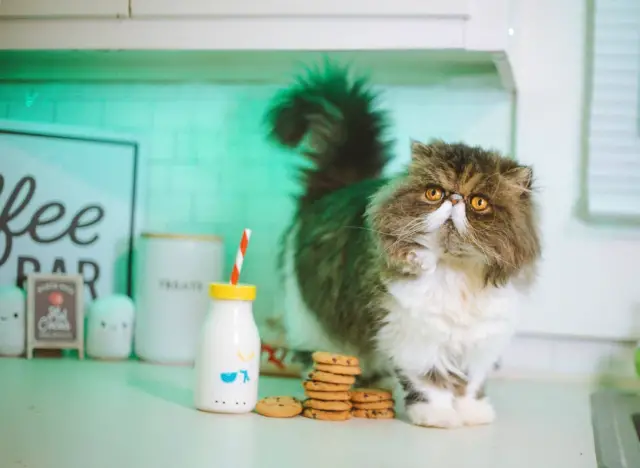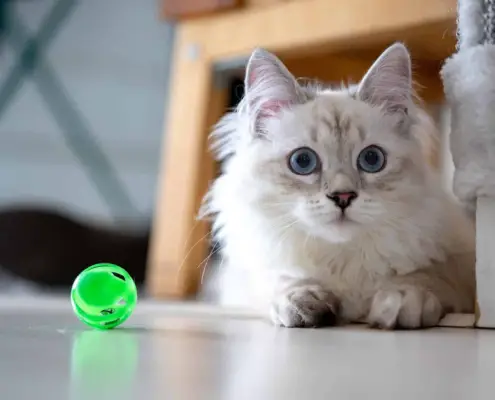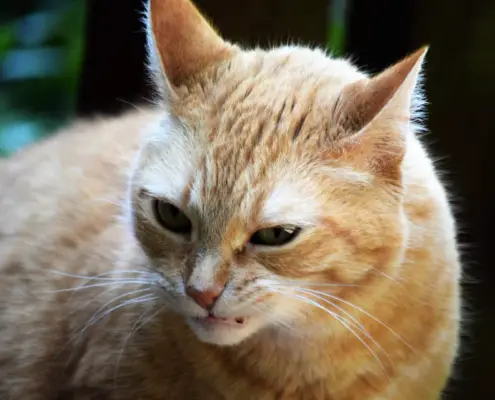
Cats are fascinating creatures, known for their mysterious and independent nature. One aspect of their biology that often goes unnoticed is their unique taste perception. Unlike humans and many other animals, cats are unable to taste sweetness. This intriguing fact raises many questions: Why can’t cats taste sweetness? How do their taste buds differ from ours? In this article, we will delve into the science behind cats’ taste perception and explore the reasons behind their inability to experience the sweet sensation.
The science behind taste perception in cats
To understand why cats can’t taste sweetness, we first need to grasp the basics of taste perception. Like humans, cats possess taste buds that are responsible for detecting different flavors. However, their taste buds are not identical to ours. Cats have fewer taste buds overall, and their taste receptors are specialized for different types of flavors.
The main taste sensations that cats can detect are bitter, sour, and salty. These tastes help cats identify potentially toxic substances in their environment. Their ability to detect bitterness, in particular, serves as a natural defense mechanism, as many harmful substances have a bitter taste. However, cats lack taste receptors for sweetness, which explains why they are unable to experience the pleasure of indulging in sugary treats.
The evolution of cats’ taste preferences
The inability to taste sweetness is not unique to domestic cats; it is a trait shared by their wild feline ancestors as well. Through evolution, cats have developed a diet that primarily consists of meat. Their taste preferences have adapted accordingly, as they have no nutritional need for sweet flavors. In the wild, cats rely on their keen sense of smell and taste to identify prey and determine its freshness. The absence of a sweet tooth allows them to focus on detecting the scents and flavors associated with their preferred food sources.
Understanding cats’ inability to taste sweetness
The reason behind cats’ inability to taste sweetness lies in their genetic makeup. The taste perception of an animal is determined by the presence of specific taste receptors on the taste buds. For humans, the ability to taste sweetness is mediated by a specific taste receptor called the sweet receptor. Cats, on the other hand, lack the gene that codes for this receptor. Without the sweet receptor, cats simply cannot detect sweet flavors.
This genetic difference is believed to have originated from a loss-of-function mutation in the sweet receptor gene that occurred millions of years ago in the feline evolutionary lineage. While this mutation may have been disadvantageous for some species, it proved to be beneficial for cats, as it allowed them to adapt to a carnivorous lifestyle.
The role of genetics in cats’ taste perception
Genetics play a crucial role in determining an animal’s taste perception, and cats are no exception. The inability to taste sweetness is a hereditary trait passed down from generation to generation. It is important to note that not all cats lack the sweet receptor gene. Some individuals may carry a functional copy of the gene, allowing them to taste sweetness to some extent. However, these cases are relatively rare, and the majority of cats exhibit the same inability to taste sweetness.
How cats’ taste preferences differ from humans
The absence of sweetness in a cat’s taste perception greatly differentiates their preferences from our own. While humans often crave sugary treats and desserts, cats are naturally drawn to flavors that are associated with their carnivorous diet. Their taste buds are finely tuned to savor the richness of meat and the savory notes that accompany it. This explains why cats are often more interested in a plate of freshly cooked chicken than a bowl of ice cream.
It is also worth mentioning that cats have a heightened sensitivity to bitterness. This sensitivity is believed to be an adaptive response to avoid ingesting poisonous substances. Bitter flavors that humans may find unpleasant can be appealing to cats, as they can detect subtle differences in bitterness that we cannot perceive.
Other flavors that cats prefer
While cats may not be able to taste sweetness, they have a range of other flavors that they find appealing. One flavor that cats particularly enjoy is umami, which is often described as a savory or meaty taste. Umami is present in various foods, such as fish, poultry, and certain types of cheese. Cats also have a preference for foods that have a strong odor, as their sense of smell is closely tied to their taste perception. This is why many commercially available cat foods are formulated to be highly aromatic.
The impact of cats’ inability to taste sweetness on their diet
Cats’ inability to taste sweetness has important implications for their diet and nutritional needs. Since they do not have a natural affinity for sweet flavors, it is unnecessary to incorporate sugary foods into their diet. In fact, too much sugar can be harmful to cats and may contribute to conditions such as obesity and diabetes. Instead, their diet should consist primarily of high-quality protein sources, such as meat or fish, which provide the essential nutrients they require.
Tips for providing a balanced diet for cats
To ensure that your feline companion receives a balanced diet, it is important to choose cat food that meets their specific nutritional needs. Look for products that list high-quality protein sources as the main ingredient and avoid those that contain excessive amounts of fillers or artificial additives. It is also beneficial to offer a variety of flavors to cater to your cat’s taste preferences and provide enrichment in their diet.
Consulting with a veterinarian can also be helpful in determining the best diet for your cat. They can provide guidance on portion sizes, feeding schedules, and any specific dietary requirements your cat may have. Remember, a well-balanced diet is essential for your cat’s overall health and well-being.
Appreciating cats’ unique taste perception
While cats may miss out on the sweet sensation that humans enjoy, their unique taste perception is a fascinating aspect of their biology. Understanding why cats can’t taste sweetness sheds light on their evolutionary history and dietary preferences. By providing a balanced diet that aligns with their natural taste preferences, we can ensure that our feline companions lead healthy and fulfilling lives. So, the next time you offer your cat a treat, remember that their taste buds are wired differently, and they appreciate a different kind of culinary delight.
To learn more about feline nutrition and how to provide the best diet for your cat, consult with a veterinarian who specializes in feline health and nutrition. They can provide personalized advice and recommendations tailored to your cat’s specific needs.
If you enjoyed my article, I would appreciate you sharing it with your network.

Sima Ndlebe
Sima writes for CatBuzz. He is interested in Cats, Health and Fitness, and Entrepreneurship.
Published: 1 November 2023




